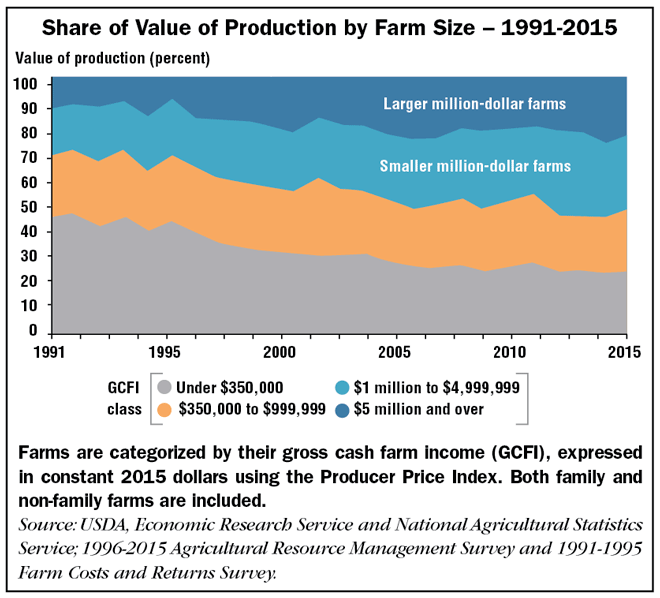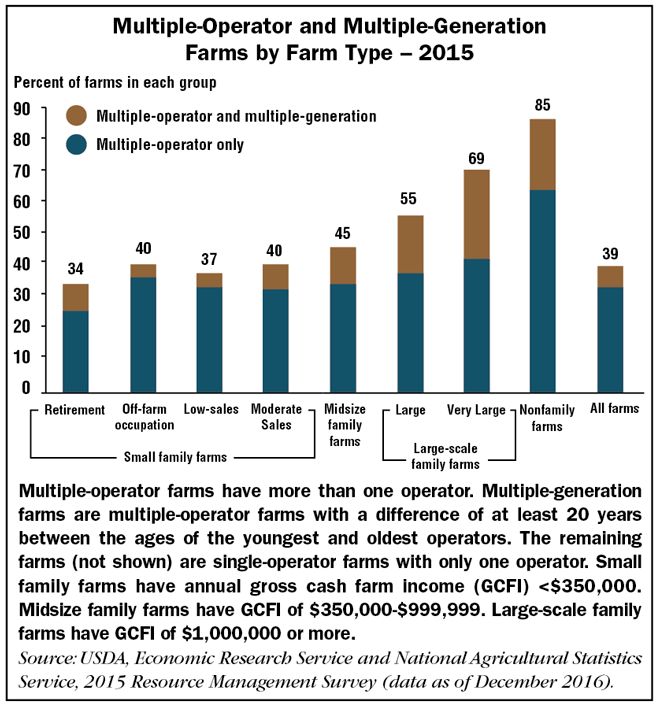Like the rest of the industry, including dealers and manufacturers of ag equipment and consumable products, U.S. farms are also consolidating and getting larger. For example, according to USDA, Farms with over $1 million in gross cash farm income (GCFI) accounted for half of the value of U.S. farm production in 2015, up from about one-third in 1991.
It’s no secret that farms in the U.S. are becoming larger, but USDA also points out that many of the largest farm operations also have multiple operators. This means that, increasingly, the sales process for capital expenditures (equipment, buildings, etc.) will require working with multiple decision makers vs. a “single” boss who made all of the buying decisions, which was typical in the past.
Million Dollar Farms
In a report released in December 2016 by the Economic Research Service of USDA entitled “America's Diverse Family Farms, 2016 Edition, the agency said that most million-dollar farms (90%) are family farms; only 10% are nonfamily farms. Larger million-dollar farms (over $5 million in GCFI) nearly doubled their share of production between 1991 and 2015. Smaller million-dollar farms (GCFI between $1 million and $4,999,999) increased their share from 19% to 29%.
This marks a shift in the share of production from small farms (GCFI under $350,000). Small farms accounted for 46% of production in 1991; by 2015, they accounted for less than 25%. Farmers who take advantage of ongoing innovations to expand their operations can reduce costs and raise profits because they can spread their investments over more acres, according to the report.

More Operators
Another USDA report, “Farm Structure and Organization,” which was also updated and released in December, points out that these commercial-sized farms often require more management and labor than an individual can provide. Additional operators can offer these and other resources, such as capital or farmland.
Having a secondary operator may also provide a successor when an older principal operator phases out of farming. In 2015, 39% of all U.S. farms (811,000 farms) had secondary operators. Because nearly all farms are family-owned, family members often serve as secondary operators; nearly two-thirds of all secondary operators were spouses of principal operators.
Multiple-operator farms are most prevalent among nonfamily farms, accounting for 85% of that group. Some multiple-operator farms are also run by multiple generations. About 6% of all farms (and 16% of all multiple-operator farms) were multiple-generation farms, with at least 20 years’ difference between the ages of the oldest and youngest operators. Very large family farms — about 28% — had the highest share of operators from multiple generations.







